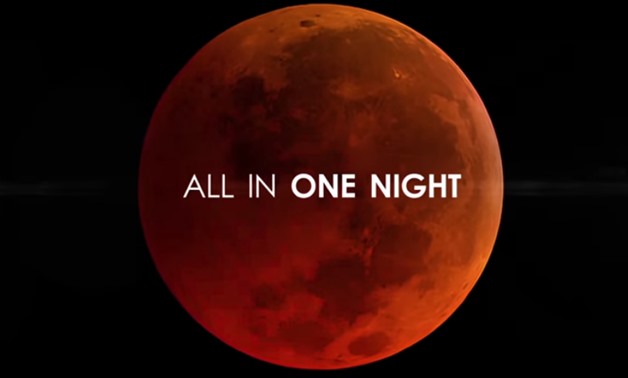
January 31 brings a lunar trifecta: the super blue blood Moon-Courtesy of NASA
CAIRO – 30 January 2018: The rare “Super Blue Blood Moon”, formed by three lunar events taking place at the same time, will light the sky across the world on January 31, for the first time in more than 150 years.
In North America, Alaska, or Hawaii, the eclipse will be visible before sunrise on January 31. For those in the Middle East, Asia, eastern Russia, Australia and New Zealand, the “Super Blue Blood Moon” can be seen during moonrise in the evening of the 31st, according to National Aeronautics and Space Administration (NASA).
For the first time since March 31, 1866, we will see a blood moon, a blue moon and a super moon all at once.
Blue moon is the second full moon in a month as usually every month has only one full moon appearing every 29 days. Most of the months are 30 and 31 days; hence, it is possible to have two full moons appear in a single month, according to NASA.

Blue moon-by NASA
Although it is known as a blue moon, the moon’s colors are usually pale gray and white. But, in 1883, the moon has appeared bluish when the volcano Krakatoa in Indonesia erupted. The plumes of ash rose to the top of earth’s atmosphere tuning the sunset and the moon to green and blue all over the world.
People also saw the blue moon after several incidents; such as after the eruption of the El Chichon volcano in Mexico in 1983.
The super moon phenomenon happens when the full moon coincides with the closest point of the moon's orbit to earth. The result is that the moon appears 30 percent brighter than usual and 14 percent bigger than a normal full moon, according to NASA Science Beta. The recent super moon phenomenon was on January 1.
.jpg) It's nearly impossible to compare the apparent size of the supermoon with a micromoon from memory, but when seen side-by-side as in this graphic, it becomes clear. Credit: NASA/JPL-Caltech
It's nearly impossible to compare the apparent size of the supermoon with a micromoon from memory, but when seen side-by-side as in this graphic, it becomes clear. Credit: NASA/JPL-Caltech
The most exciting phenomenon on January 31 will be the total lunar eclipse when the earth comes between the sun and the moon; therefore, the sun's light, which normally shines off the moon, is blocked by our planet. The moon appears in a reddish hue.
“The January 31 full moon is special for three reasons: it’s the third in a series of 'supermoons', when the moon is closer to earth in its orbit -- known as perigee -- and about 14 percent brighter than usual. It’s also the second full moon of the month, commonly known as a 'blue moon'. The super blue moon will pass through earth’s shadow to give viewers in the right location a total lunar eclipse. While the moon is in the earth’s shadow, it will take on a reddish tint, known as a 'blood moon',” according to NASA.
.jpg)
Comments
Leave a Comment